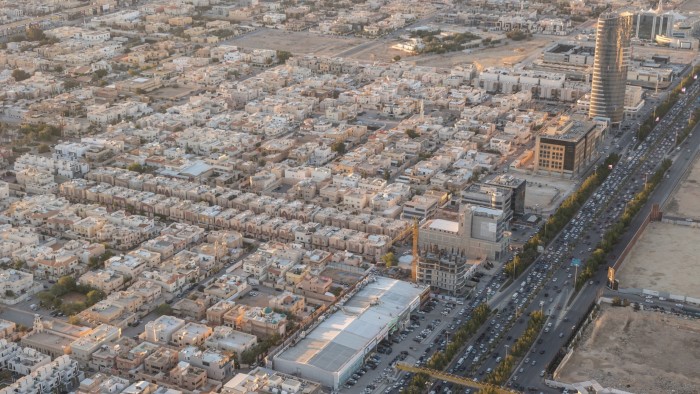Saudi Arabia’s housing minister has acknowledged that soaring property prices in Riyadh have become a “concern” for the government, highlighting the difficulties facing officials desperate to turn home ownership into a reality for the vast majority of its citizens in the capital.
Property prices in Riyadh have surged since the pandemic, with the cost of a house now almost 81 per cent higher than in 2020, according to real estate researchers Knight Frank. Apartment prices in the city, meanwhile, have increased 56 per cent over the same period.
The surge in prices is complicating Crown Prince Mohammed bin Salman’s attempts to hit a 70 per cent goal for owner-occupancy by 2030.
At the moment, 63 per cent of Saudis own their own home, up from 47 per cent in 2016, when the Crown Prince’s ambitious reforms of the Saudi economy were first unveiled.
But the figure in Riyadh, where 4.4mn of 18.8mn Saudis live, is far lower at 53.2 per cent, according to the latest census data, taken from 2022.
Housing minister Majed al-Hogail said in an interview with the Financial Times in November that the government was trying to address the affordability issues through different initiatives. He emphasised that the government remained on track to reach the national home ownership target on schedule, despite the surge in prices in the capital.
Those include the building of more than 30,000 units by the state-owned National Housing Company with prices starting at SR375,000 ($100,000) in newly developed suburbs, about an hour’s drive from the city centre. Citizens can sign up for state-subsidised bank loans to buy these homes off-plan.
“[Other] local developers are also supplying units, homes,” the minister said. “And the more you have supply, the more you fix the affordability of that.”
A wave of young Saudis moving to Riyadh, lured by job opportunities at new government authorities and projects at the Public Investment Fund, the country’s sovereign wealth fund, has pushed up property prices despite a rise in borrowing costs.
While Saudi workers were paid an average of SR121,908 a year in 2023, the average house price for a three-bedroom villa in Riyadh is now about SR2.28mn, according to data by Aqar, a local property listing platform.
“I wish I insisted on buying a house earlier because now I’m no longer sure if I can afford it with the current prices,” said Mansour, a 43-year-old civil servant and father of one, who is paid about SR15,000 a month.
“I don’t think I can afford anything in Riyadh right now, unless the interest rates on loans go dramatically lower.”
Outside the capital, house prices have remained relatively stable since the pandemic. In the Red Sea port city of Jeddah, average prices have even fallen — dipping by 8 per cent — since 2020, according to Knight Frank, though apartment prices have increased by 14 per cent.
With the influx of young newcomers and the lifting of social restrictions on women and entertainment, developers — including the PIF-backed Roshn Group — have been able to eschew traditional concerns over privacy and a desire for space, and use soaring demand to sell units closer together.
Roshn, which has a mandate to build 400,000 new units by 2030 across Saudi Arabia, has constructed developments in the north-east suburbs of Riyadh that it claims have created integrated communities, with facilities such as playgrounds and sports clubs, which it says are more walkable.
Oussama Kabbani, the company’s chief development officer, said Roshn was taking a “big risk” with its first project in the capital city by deciding to build some homes that are not separated from the street by walls.
“We asked: ‘what happens if you take that wall out and create [what we call] a living street in which people know each other? Would people accept that?’ We didn’t know. To our surprise, it just flew,” he said as he flicked his fingers. “People embraced this level of change. They were waiting for someone to finally open the door for a new lifestyle.”
Kabbani said their projects were targeting the upper middle class, with homes in the SR800,000 to SR2.5mn price range.
But research and consumer surveys conducted by real estate consultancy Knight Frank suggest that prices like these are outside the range of many Saudi citizens.
“About two-thirds of Saudi nationals are prepared to spend no more than SR1.5mn on buying a home. Most of them are looking for a three- or four-bedroom villa,” said Faisal Durrani, head of research for the Middle East and north Africa at Knight Frank. “We’ve got a discrepancy between budgets, prices in the market and what they want to buy.”
Mansour agreed. “My wife and I saw some houses and they did not look like they were built for people with any children,” he said. “I would feel bad for children who will live in such small, confined space.”
Read the full article here

